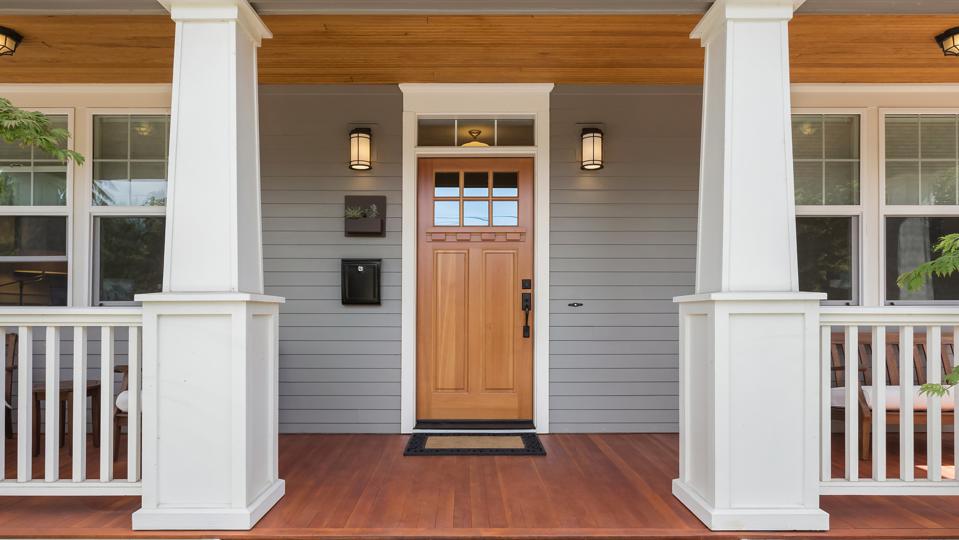Today’s mortgage and repayment rate
The last rate on a 30 year fixed rate mortgage is 3.303%.
© Silver; Getty Images
Mortgage-Rate-001
- The last rate on a 15 year fixed rate mortgage is 2.441%.
- The latest rate on a 5/1 jumbo arm is 3.744%.
- The latest rate on a 7/1 compliant ARM is 4.096%.
- The latest rate on a 10/1 compliant ARM is 3.706%.
30-year fixed mortgage rates today
- The 30-year rate is 3.303%.
- It’s a day offold by 0.006 percentage point.
- It’s a month offold by 0.059 percentage point.
The most common mortgage is the 30-year fixed rate mortgage. With this loan, your interest rate and your monthly payments will never change. Your total payback time will be 360 months, unless you pay extra, refinance, or sell.
The longer repayment time means your monthly payments will be lower than with other types of loans. However, a 30 year mortgage will have a higher interest rate than a short term loan like a 15 year loan. By paying a higher rate for twice as long, you will end up owing more interest with a 30-year loan.
15 years old fixed mortgage prices today
- The 15-year rate is 2.441%.
- It’s a day infold 0.002 percentage point.
- It’s a month offold by 0.048 percentage point.
Likewise, your interest rate and monthly payments won’t change with a 15-year fixed rate mortgage either. The payback period will be 180 months, unless you pay extra, refinance or sell.
The shorter repayment term means your monthly payments will be higher than some longer term loans. However, the interest rate on a 15-year loan will be lower than that on a 30-year mortgage. The great thing about a 15 year loan is that you will pay less total interest, since you will be paying a lower rate half the time.
5/1 Variable Rate Jumbo Mortgage Rates Today
- The ARM 5/1 rate is 3.744%.
- It’s a day infold 0.002 percentage point.
- It’s a month offold by 0.225 percentage point.
With a variable rate mortgage, your interest rate and monthly payments will start to be fixed and then become variable. The payback period for ARMs is typically 360 months, unless you make additional payments, refinance, or sell.
A 5/1 ARM, for example, will have a fixed interest rate for the first five years, then adjust once a year. The monthly payments will adjust with any rate change. You can also find a 7/1 and a 10/1 ARM.
VA, FHA and Jumbo Loan Rates Today
The average rates for FHA, VA and jumbo loans are:
- The rate on a 30-year FHA mortgage is 3.081%.
- The rate for a 30-year VA mortgage is 3.111%.
- The rate for a 30-year jumbo mortgage is 3.769%.
Mortgage Refinance Rate Today
The average rates for 30-year loans, 15-year loans and jumbo 5/1 ARMs are as follows:
- The refinancing rate on a 30 year fixed rate refinance is 3.674%.
- The refinancing rate on a 15-year fixed rate refinance is 2.631%.
- The refinance rate on a 5/1 jumbo arm is 4.175%.
- The refinancing rate on a 7/1 compliant ARM is 4.335%.
- The refinancing rate on a 10/1 compliant ARM is 4.426%.
Where Are Mortgage Rates Going This Year?
Mortgage rates fell through 2020. Millions of homeowners responded to low mortgage rates by refinancing existing loans and taking out new ones. Many people have bought homes that they might not have been able to afford if the rates were higher.

Loading error
In January 2021, rates briefly fell to all-time low levels, but trended higher throughout the month and into February.
Looking ahead, experts believe that interest rates will rise further in 2021, but modestly. Factors that could influence the rates include how quickly COVID-19 vaccines are distributed and when lawmakers can agree on another cost-effective relief package. More vaccinations and stimulus from the government could lead to improved economic conditions, which would increase rates.
While mortgage rates are likely to rise this year, experts say the increase won’t happen overnight, and it won’t be a dramatic jump. Rates are expected to stay close to their historically low levels throughout the first half of the year, rising slightly later in the year. Even with rates rising, this will still be a good time to finance a new home or refinance.
Factors that influence mortgage rates include:
- The Federal Reserve. The Fed acted quickly when the pandemic hit the United States in March 2020. The Fed announced its intention to keep money flowing through the economy by lowering the Federal Fund’s short-term interest rate between 0% and 0.25%, which is also low as you go. The central bank has also committed to buying mortgage-backed securities and treasury bills, thereby supporting the housing finance market. The Fed has repeatedly reaffirmed its commitment to these policies for the foreseeable future, most recently at a policy meeting in late January.
- The 10-year Treasury bill. Mortgage rates move in line with the yields on 10-year government treasury bills. Yields fell below 1% for the first time in March 2020 and have slowly risen since. Currently, rates have hovered above 1% since the start of the year, pushing interest rates slightly higher. On average, there is typically a 1.8 point “spread” between Treasury bill yields and benchmark mortgage rates.
- The economy in the broad sense. Unemployment rates and changes in gross domestic product are important indicators of the overall health of the economy. When employment and GDP growth are low, it means the economy is weak, which can lower interest rates. Thanks to the pandemic, unemployment levels hit all-time highs early last year and have yet to recover. GDP has also been affected, and although it has rebounded somewhat, there is still a long way to go.
Tips for getting the lowest possible mortgage rate
There is no universal mortgage rate that all borrowers receive. Qualifying for the lowest mortgage rates takes a bit of work and will depend on both personal financial factors and market conditions.
Check your credit score and your credit report. Mistakes or other red flags that can lower your credit rating. The borrowers with the highest credit scores will get the best rates, so it’s essential to check your credit report before you begin the home search process. Taking action to correct mistakes will help increase your score. If you have high credit card balances, paying them off can also give you a quick boost.
Save money for a large down payment. This will reduce your loan-to-value ratio, which is the portion of the house price that the lender has to finance. A lower LTV usually results in a lower mortgage rate. Lenders also like to see money that has been saved in an account for at least 60 days. It tells the lender that you have the money to finance the purchase of the house.
Shop for the best price. Don’t settle for the first interest rate a lender offers you. Check with at least three different lenders to see who is offering the lowest interest rate. Also, think about different types of lenders, such as credit unions and online lenders, in addition to traditional banks.
Also take the time to learn about the different types of loans. Although the 30-year fixed-rate mortgage is the most common type of mortgage, consider a short-term loan such as a 15-year loan or an adjustable rate mortgage. These types of loans often have a lower rate than a conventional 30-year mortgage. Compare everyone’s costs to see which one best suits your needs and financial situation. Government loans – such as those backed by the Federal Housing Office, the Department of Veterans Affairs, and the Department of Agriculture – may be more affordable options for those who qualify.
Finally, lock your rate. Locking in your rate once you’ve found the right rate, the right loan product, and the lender will help ensure that your mortgage rate doesn’t increase until the loan closes.
Our mortgage rate methodology
Money’s Daily Mortgage Rates show the average rate offered by over 8,000 lenders in the United States for which the most recent business day rates are available. Today we are posting the rates for Wednesday May 26, 2021. Our rates reflect what a typical borrower with a credit score of 700 might expect to pay for a home loan right now. These rates were offered to people with a 20% down payment and include reduction points.
More from Money:
© Copyright 2020 Ad Practitioners, LLC. All rights reserved.
This article was originally published on Money.com and may contain affiliate links for which Money receives compensation. The views expressed in this article are those of the author alone, not those of any third party, and have not been reviewed, endorsed or otherwise approved. Offers may be subject to change without notice. For more information read Full Money Disclaimer.
Continue reading




